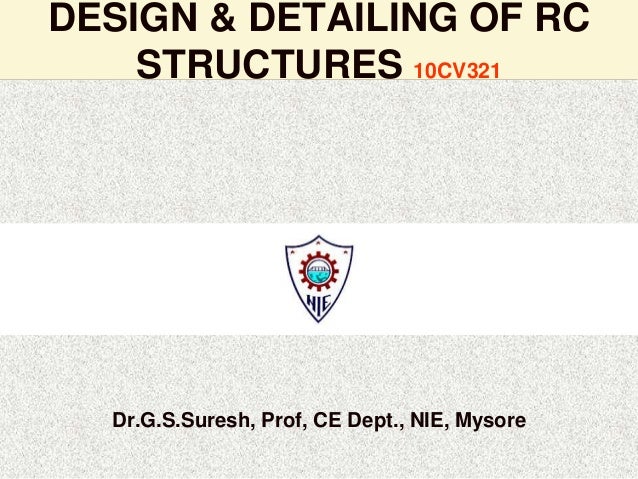Reinforced Concrete Design By H J Shah Free 53 This best-selling textbook provides a straightforward and practical introduction to the principles and methods used in the design of reinforced and prestressed concrete structures, and has been used and trusted by generations of students. Reinforced Concrete Design By H J Shah Free. Posted on 6/1/2018 admin. The novel shape of the in was allowed by reinforced concrete. Reinforced concrete (RC) (also called reinforced cement concrete or RCC) is a in which 's relatively low and are counteracted by the inclusion of reinforcement having higher tensile strength or ductility. Shah AdvAnced reinforced concrete. Download Books Rcc Design Shah And Karve Slibforme Com For Free, Books Rcc Design Shah And Karve. This best-selling textbook provides a straightforward and practical introduction to the principles and methods used in the design of reinforced and prestressed concrete structures, and has been used and trusted by generations of students.

Reinforced Concrete Design By H J Shah Pdf Free Download



Reinforced Concrete Design By H J Shah Free Download
Reinforced Concrete Design By H J Shah Free' />Materials Free Full Text Green Synthesis of Metallic Nanoparticles via Biological Entities 1. Introduction. In recent years, the convergence of nanometre size scale technologies and biological technologies has created the new field of nanobiotechnology. This relatively new field is focused on the creation, manipulation, and use of materials at the nanometre scale for advanced biotechnology 1. At the forefront of this field is the synthesis of nanometre size scale particles via biological entities. Nanoparticles are of great interest due to their novel physicochemical, magnetic, and optoelectronic properties that are governed by their size, shape, and size distribution 2,3,4,5,6. Reinforced Concrete Design By H J Shah Free' />It is predominantly the nanoparticles extremely small size and large surface area to volume ratio that leads to the significant differences in properties e. Because of these unique physicochemical and optoelectronic properties, nanoparticles are of particular interest for a number of applications ranging from as catalysts, chemical sensors, electronic components, medical diagnostic imaging, pharmaceutical products, and medical treatment protocols. For example, metallic nanoparticles of noble metals such as gold, silver, platinum, and palladium have been widely used in products ranging from cosmetic to medical and pharmaceuticals. Gold nanoparticles have been extensively used in biomedical applications 8,9,1. Silver nanoparticles have been found to possess both anti bacterial and anti inflammatory properties that can promote faster wound healing. Manuscript title Authors Nontoxic naturally Control Methods For Sustainable Control Of Main Pests In Olive Farms In Egypt procedia. ICONTES52111084. It should be mentioned that, according to 2800 code, if seven accelerators are used instead of three accelerators, the average of responses can be considered as final. Find A to Z full Forms Abbreviations Acronyms and All Full Forms at AllFullForms. This video provides an overview of how to perform Critical Path Method CPM to find the Critical Path and Float using a. Because of these advantageous properties, silver nanoparticles have been integrated into commercially available wound dressings, pharmaceutical preparations, and medical implant coatings 1. Platinum nanoparticles have been widely used in biomedical applications in either pure form or alloyed with other nanoparticles 2. In addition, non noble metallic nanoparticles such as iron 2. Due to the increased demand for various metallic and non metallic nanoparticles over the past two decades, a wide range of physical and chemical techniques have been developed to produce nanoparticles of different sizes, shapes, and compositions. Traditionally, nanoparticles have been synthesized and stabilised via physical and chemical techniques. The physical approach includes techniques such as laser ablation 3. While the chemical approach uses techniques such as chemical reduction, electrochemistry, and photochemical reduction 3. Studies have shown that during the synthesis process, size, shape, stability, and physicochemical properties of the nanoparticles are strongly influenced by a variety of factors. These factors include process parameters temperature, concentrations, etc., process kinetics involving the interplay between the metal ion precursors and the reducing agent, and adsorption kinetics involving the stabilizing agent and the nanoparticles 4. Consequently, designing a process that effectively controls the size, shape, stability, and physicochemical properties is currently at the forefront of research into nanoparticle synthesis 4. Conventional synthesis of nanoparticles can involve expensive chemical and physical processes that often use toxic materials with potential hazards such as environmental toxicity, cytotoxicity, and carcinogenicity 4. The toxicity problems arise from the hazardous substances, such as organic solvents, reducing agents, and stabilizers that are used to prevent unwanted agglomeration of the colloids. In addition, some nanoparticles have also been found to be toxic due to factors such as composition, size, shape, and surface chemistry. As a result, the presence of these toxic formation agents on the synthesized nanoparticles and potentially the nanoparticles themselves has prevented their clinical and biomedical application. Importantly, all these factors can be potentially controlled via biological mediated production. The mechanochemical method was proposed by Ao et al., they synthesized ZnO with an average crystallite size of 21 nm. The milling process was carried out for 6 h. As a result, there is currently widespread interest in developing clean, reliable, biologically compatible, benign, and environment friendly green processes to synthesize nanoparticles 4. In recent years, biological synthesis has emerged as an attractive alternative to traditional synthesis methods for producing nanoparticles. Biosynthesis involves using an environment friendly green chemistry based approach that employs unicellular and multicellular biological entities such as actinomycetes 4. Synthesising nanoparticles via biological entities acting as biological factories offers a clean, nontoxic and environment friendly method of synthesizing nanoparticles with a wide range of sizes, shapes, compositions, and physicochemical properties 6. Another interesting feature of many biological entities is their ability to act as templates in the synthesis, assembly and organisation of nanometre scale materials to fabricate well defined micro and macro scale structures. For example, viruses have been used to assemble gold and iron oxide nanoparticles to form microstructures 6. Comparing the above mentioned biological identities and their potential to become efficient biological factories, synthesizing nanoparticles via plants, is a relatively straight forward and advantageous approach 7. In comparison with microorganisms, the plant approach is more advantageous since it does not need any special, complex, and multi step procedures such as isolation, culture preparation, and culture maintenance. Furthermore, synthesis in plants tends to be faster than microorganisms, is more cost effective and is relatively easy to scale up for the production of large quantities of nanoparticles 7. The aim of this review is to present a brief overview of the techniques used to characterise nanoparticles, microbial routes for synthesising metal and metal oxide nanoparticles, use of plants extracts for synthesis of nanoparticles, factors influencing the synthesis process, possible mechanisms involved in nanoparticle formation and growth, and potential applications of nanoparticles synthesised using natural biological factories found in plants. Characterisation Techniques. S0020768314000547-gr2.jpg' alt='Reinforced Concrete Design By H J Shah Free' />To date, there are numerous techniques for synthesizing nanoparticles. However, these techniques fall into two broad approaches and can be defined as either a top down approach or a bottom up approach 8. The top down approach starts with a material of interest, which then undergoes size reduction via physical and chemical processes to produce nanoparticles. Importantly, nanoparticles are highly dependent on their size, shape, and surface structure and processing tends to introduce surface imperfections. These surface imperfections can significantly impact on the overall nanoparticle surface physicochemical properties 8. In the bottom up approach, nanoparticles are built from atoms, molecules and smaller particlesmonomers 8. A Gangster Kiss Book 2'>A Gangster Kiss Book 2. In either approach, the resulting nanoparticles are characterized using various techniques to determine properties such as particle size, size distribution, shape, and surface area. Tabaco Garnier there. This is of particular importance if the properties of nanoparticles need to be homogeneous for a particular application. In the case of chemical and biological synthesis of nanoparticles, the aqueous metal ion precursors from metal salts are reduced and as a result a colour change occurs in the reaction mixture. This is the first qualitative indication that nanoparticles are being formed.
